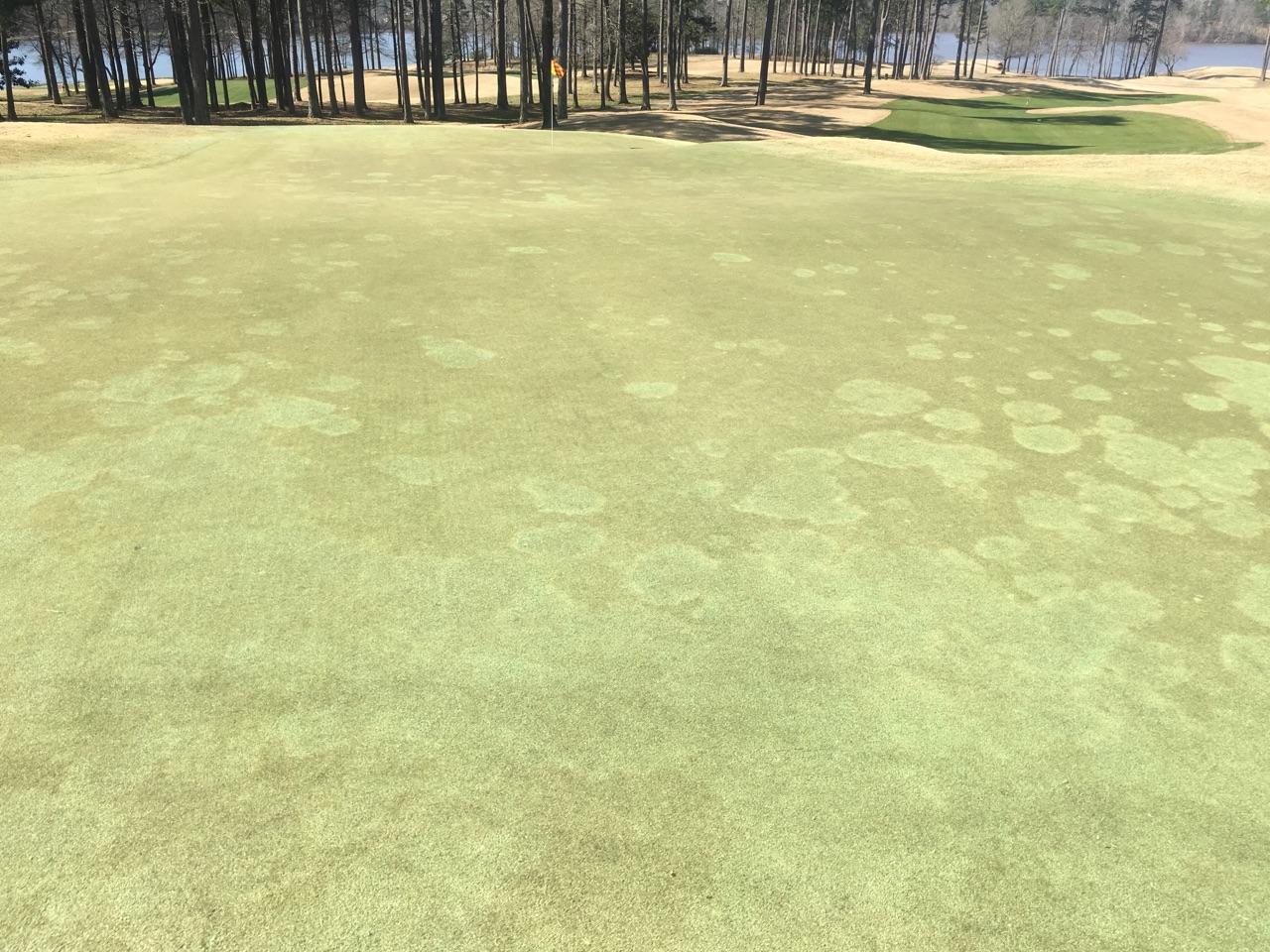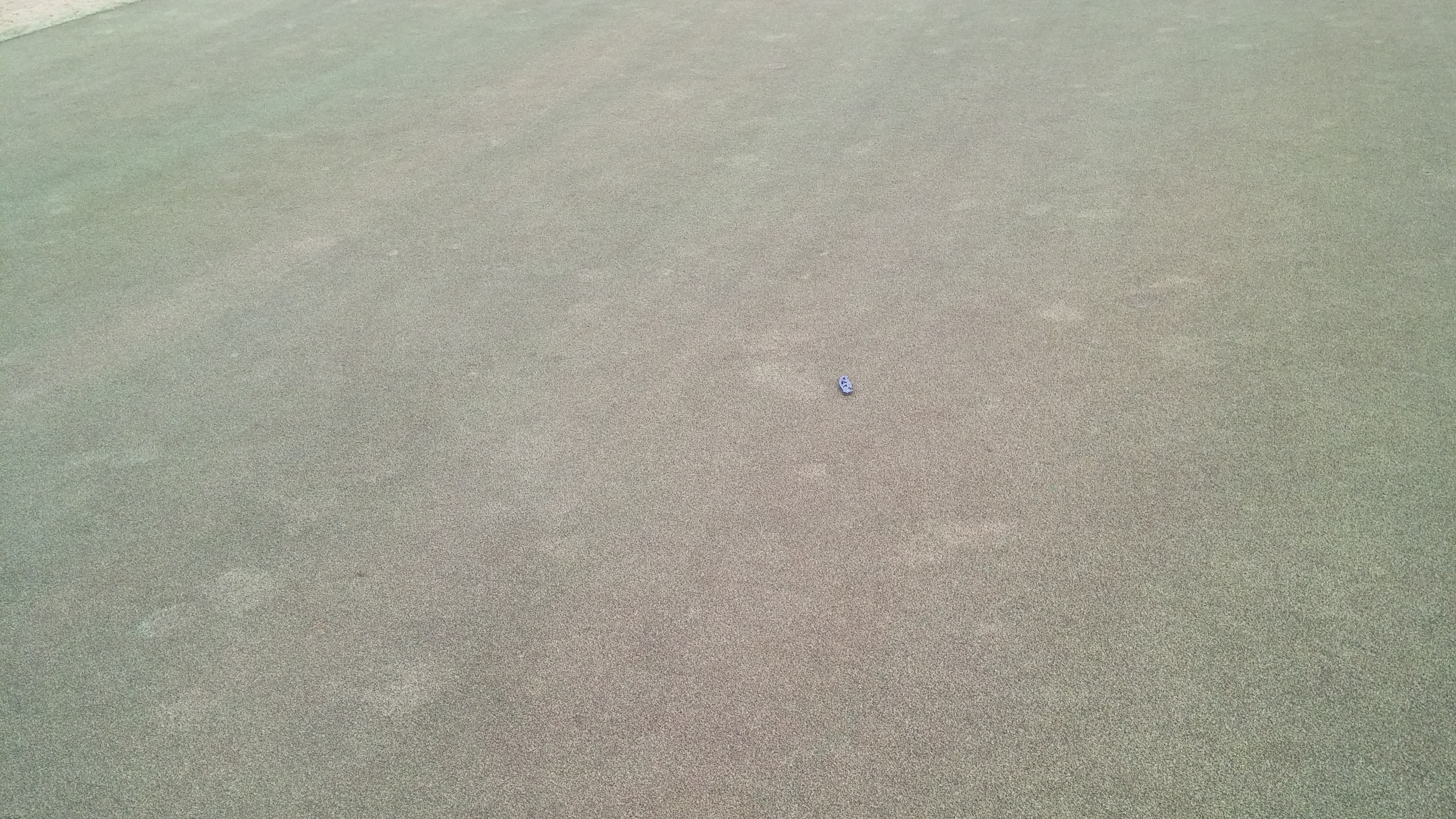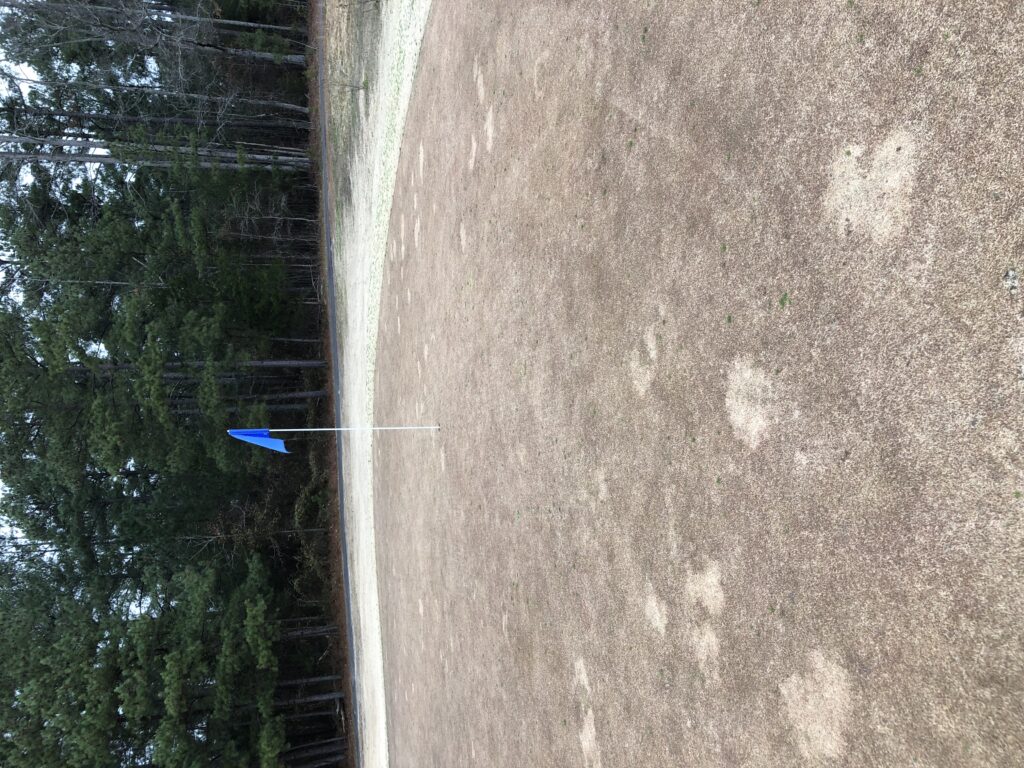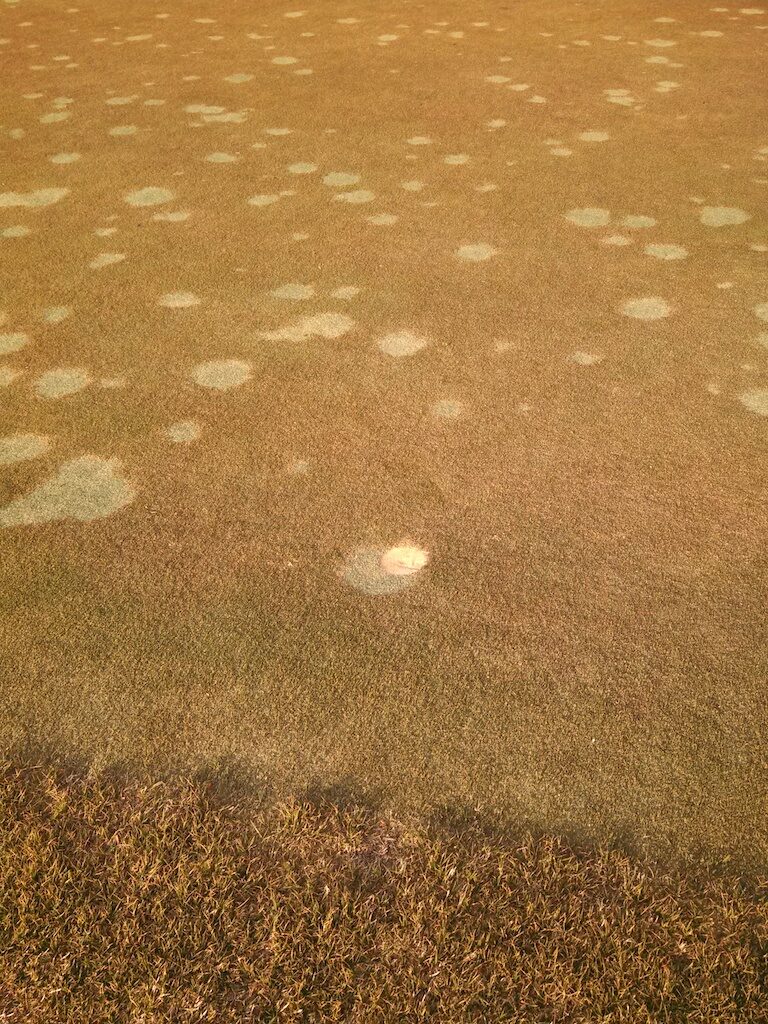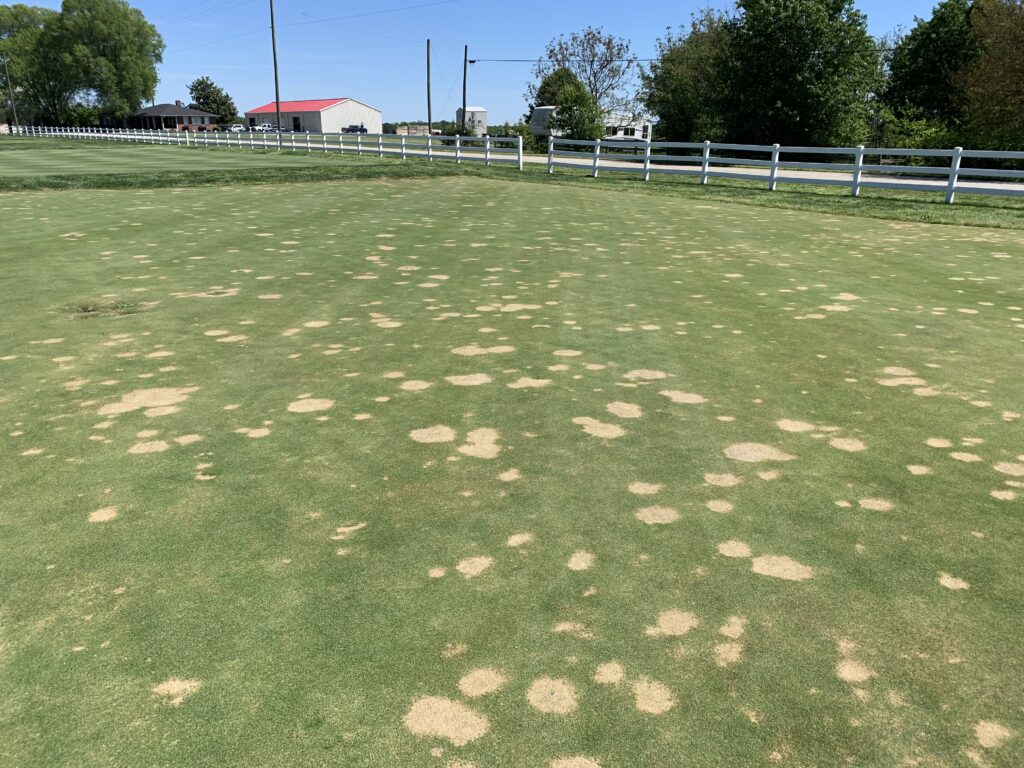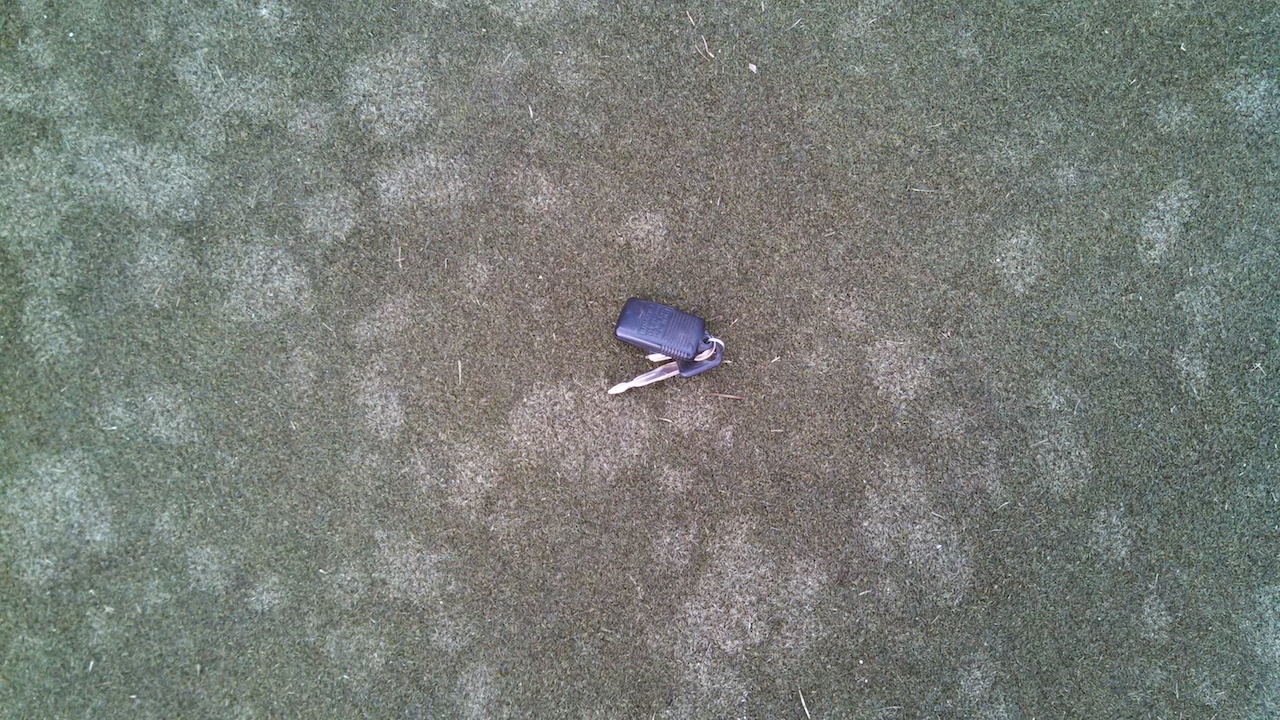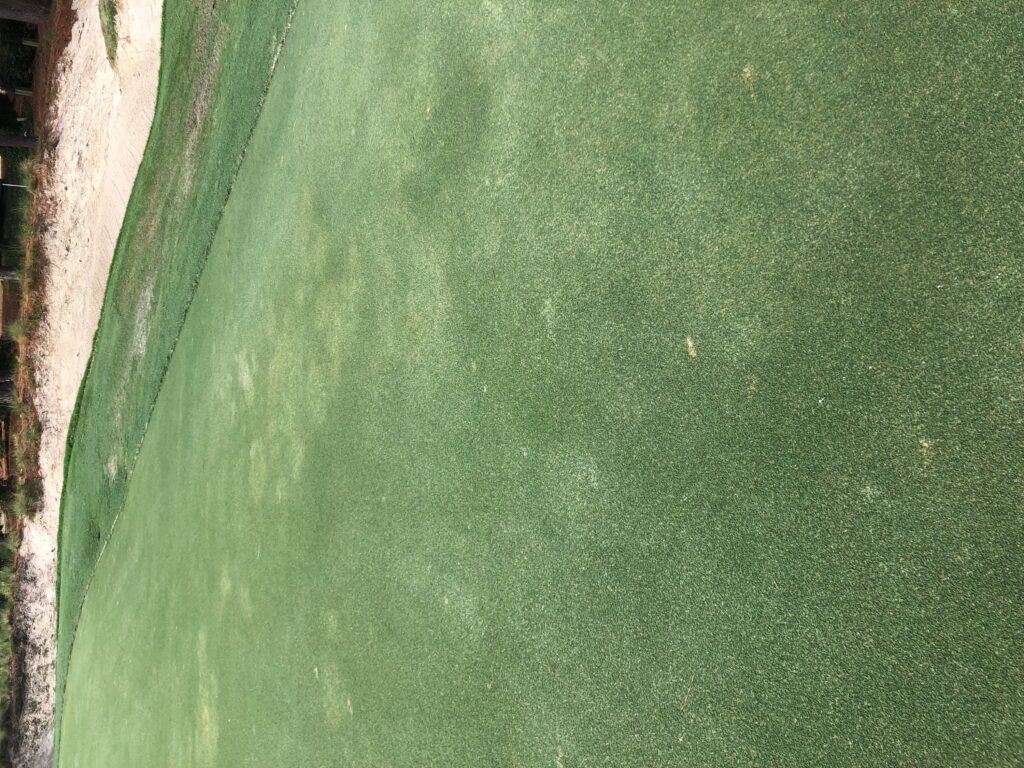Disease or Not Disease, That Is the Ultradwarf Question!
go.ncsu.edu/readext?925408
en Español / em Português
El inglés es el idioma de control de esta página. En la medida en que haya algún conflicto entre la traducción al inglés y la traducción, el inglés prevalece.
Al hacer clic en el enlace de traducción se activa un servicio de traducción gratuito para convertir la página al español. Al igual que con cualquier traducción por Internet, la conversión no es sensible al contexto y puede que no traduzca el texto en su significado original. NC State Extension no garantiza la exactitud del texto traducido. Por favor, tenga en cuenta que algunas aplicaciones y/o servicios pueden no funcionar como se espera cuando se traducen.
Português
Inglês é o idioma de controle desta página. Na medida que haja algum conflito entre o texto original em Inglês e a tradução, o Inglês prevalece.
Ao clicar no link de tradução, um serviço gratuito de tradução será ativado para converter a página para o Português. Como em qualquer tradução pela internet, a conversão não é sensivel ao contexto e pode não ocorrer a tradução para o significado orginal. O serviço de Extensão da Carolina do Norte (NC State Extension) não garante a exatidão do texto traduzido. Por favor, observe que algumas funções ou serviços podem não funcionar como esperado após a tradução.
English
English is the controlling language of this page. To the extent there is any conflict between the English text and the translation, English controls.
Clicking on the translation link activates a free translation service to convert the page to Spanish. As with any Internet translation, the conversion is not context-sensitive and may not translate the text to its original meaning. NC State Extension does not guarantee the accuracy of the translated text. Please note that some applications and/or services may not function as expected when translated.
Collapse ▲As temperatures across our region roller coaster their way into spring, bermudagrass putting greens are often some of the first warm-season turfgrass systems to green up. While that’s a good thing most of time, sometimes it is not as welcoming when patches of dead or slow to green up turf exhibits itself after a stretch of warm days. Bermudagrass putting greens that were injured by disease activity last fall going into dormancy will likely still show symptoms from those infections despite the fungi no longer being active.
The most common diagnosis has been take-all root rot, however, we have also diagnosed several cases of spring dead spot and cream leaf blight. In addition to bona fide diseases, we also see differences in green up and responses to management inputs from off-types.
You may ask yourself why does this matter? It matters because the stand symptoms are all very similar and can be very difficult to separate in the field. A laboratory diagnosis is essential when you observe off-colored patches this time of year.
Take-All Root Rot
With the flurry of putting greens in North Carolina being converted from creeping bentgrass to ultradwarf bermudagrass (UDB) in early 2000’s, take-all root rot climbed to the top spot as the most commonly diagnosed disease of UDB greens in 2016 and has remained at the top ever since.
Recently, multiple organisms have been associated with take-all root rot. This has presented a challenge and opportunity for turfgrass pathologists to study the biology of the multiple pathogens associated with TARR. It is not uncommon to find these organisms present on healthy turfgrass and can be transported on sprigs. Like many diseases, changes in environmental conditions and plant health influence disease symptom development.
Most TARR samples sent to the Turf Diagnostics Lab are diagnosed in the fall, winter, and spring months. However, TARR is consistently diagnosed on a monthly basis throughout the year. The rise of TARR diagnosis in the shoulder seasons is likely due to the change in environmental conditions such as cooler and cloudy weather and shorter day length that increase bermudagrass stress. The optimal soil temperatures for the growth of TARR organisms ranges between 77-86°F (25-30°C) and preventative measures should be conducted during this time frame. Excessive thatch, poor drainage, over-irrigating, and stressed turfgrass are the most common factors contributing to TARR development. Other factors that may increase the severity of TARR are excessive low mowing heights, low fertility, and over regulation. Recent research conducted by one of graduate students, Brandi Merrick, has shown how critical manganese is for suppressing take-all root rot.
Read more at: Take-all Root Rot Disease Profile
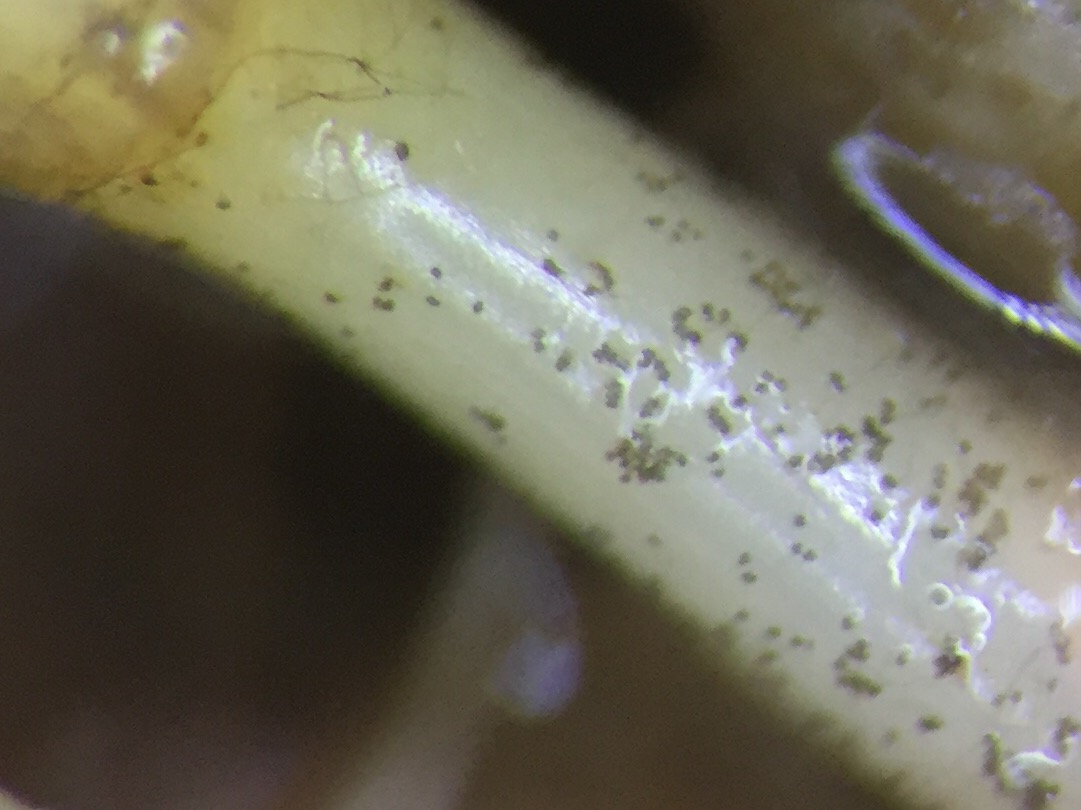
Specialized infection/attachment structures (hyphopodia) created by the causal fungus of take-all root rot (Gaeumannomyces spp.) on a stolon of an UDB plant
Spring Dead Spot
Spring dead spot (SDS) has been diagnosed multiple times on UDB putting greens in the past few weeks due to the warmer than usual weather in February which led to greening up in most locations across the state. As many of you know, SDS is likely the most devastating disease on this list because there will be very little to no recovery within these patches. Recovery will only be from surrounding healthy plants sending stolons across to fill in the void. Another option, if you have a nursery and you are lucky enough to only have a few patches here and there, would be to replace these with healthy plugs. Potential reasons for SDS development this time of year are: 1) spraying fungicides too early, 2) Not watering the fungicides in enough after the application, 3) Bad luck.
Read more at: Spring Dead Spot Disease Profile

Mycelial plaque produced by Ophiosphaerella spp., the causal agent of SDS on an UDB stolon. Notice how this is different from hyphopodia created by take-all root rot.
Cream Leaf Blight
Little is known about the disease on bermudagrass putting greens, but we commonly observe it in the transition zone and even into northern Florida. However, the disease is most prevalent in areas where bermudagrass goes dormant. The disease rose to prominence in the Southeast as the conversion from creeping bentgrass putting greens to ultradwarf bermudagrass increased. We suspect that the disease has been present for some time and likely was diagnosed as superficial fairy ring, pink patch or some other basidiomycete fungus. As golf course superintendents were working out winter management practices, cream leaf blight was alarming as it could span large areas of putting greens quickly, yet the disease never seemed to cause any serious damage.
On bermudagrass putting greens, the symptoms start as small white or cream spots or patches ranging in size from 3 to 8 inches in diameter. The patches rarely increase in size, but may coalesce into larger areas. The disease is cosmetic, as we have observed little lasting damage associated with the disease, yet it can affect large areas of turf. The stand symptoms can be difficult to see when bermudagrass is painted or pigmented during the winter months. Symptoms have been observed across entire putting greens during the winter months.
Affected leaves have a cream to whitish appearance, but no visible lesions can be found on the leaves. No symptoms or signs are observed on stolons, rhizomes or roots.
Read more at: Cream Leaf Blight Disease Profile
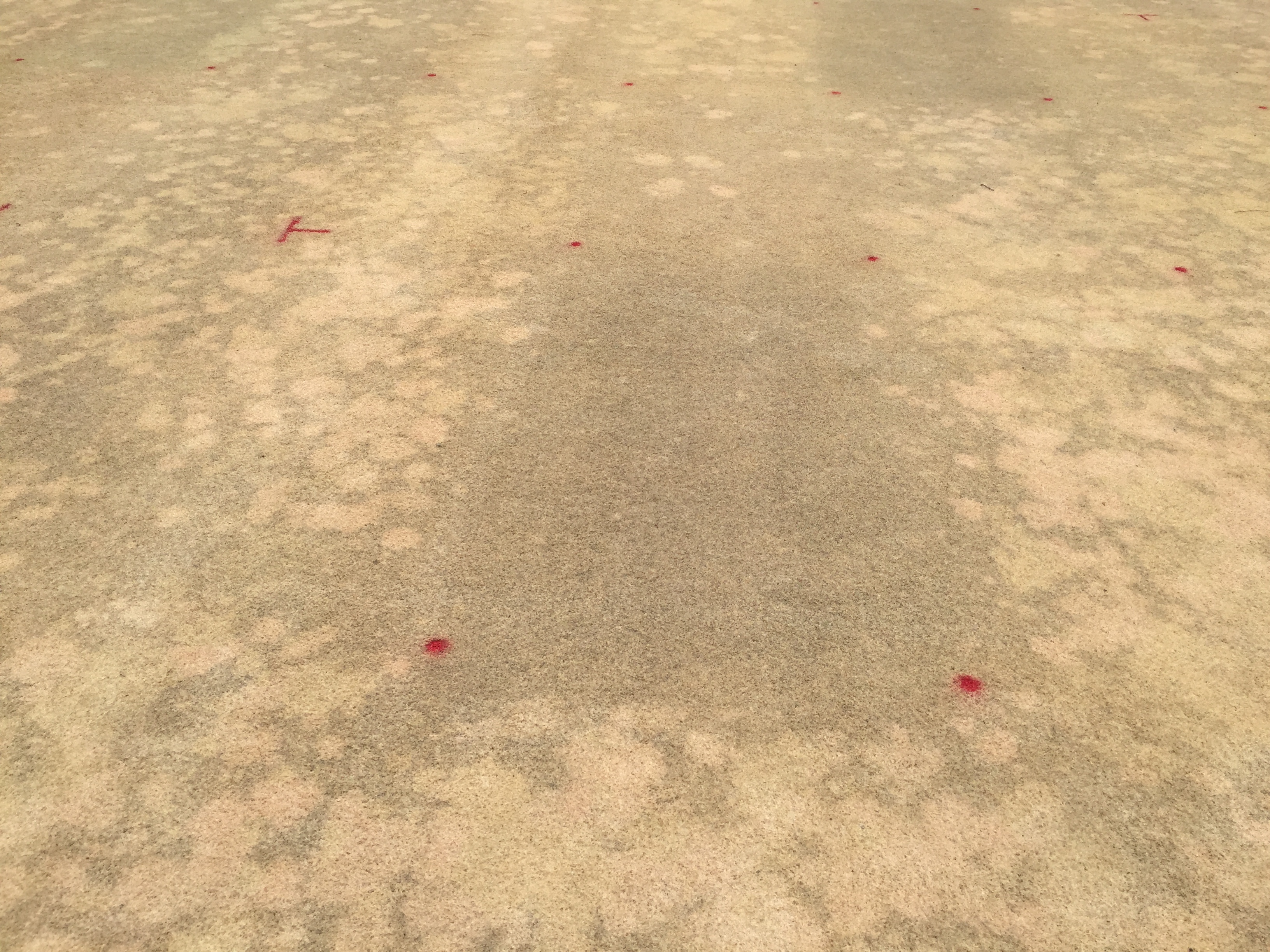
Cream leaf blight symptoms during UDB putting green dormancy. The clean research plot in this photo is from a preventative application with an SDHI fungicide for spring dead spot control the prior fall.
“Off-Type” Bermudagrass
Just like aging stands of creeping bentgrass, older stands of ultradwarf bermudagrass putting greens are now showing off-types/mutations/contaminants. These off-types may respond differently to management practices, recent weather, etc. and may appear similar to the UDB disease symptoms listed above. This also means they may green up quicker/slower than the desired cultivar and may be more/less susceptible to the fluctuating temperatures this time of year.
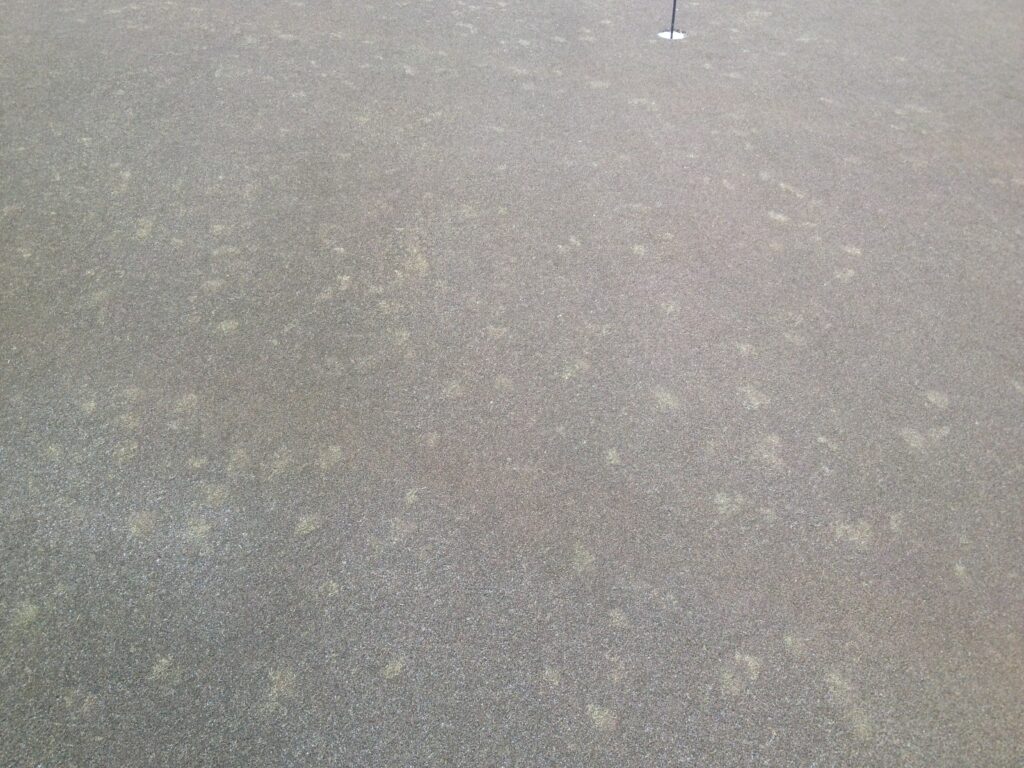
Off-types in a bermudagrass putting green during the winter months. This symptom could easily be mistaken for a disease like cream leaf blight. – Photo Credit – Dr. Jim Brosnan at the University of Tennessee
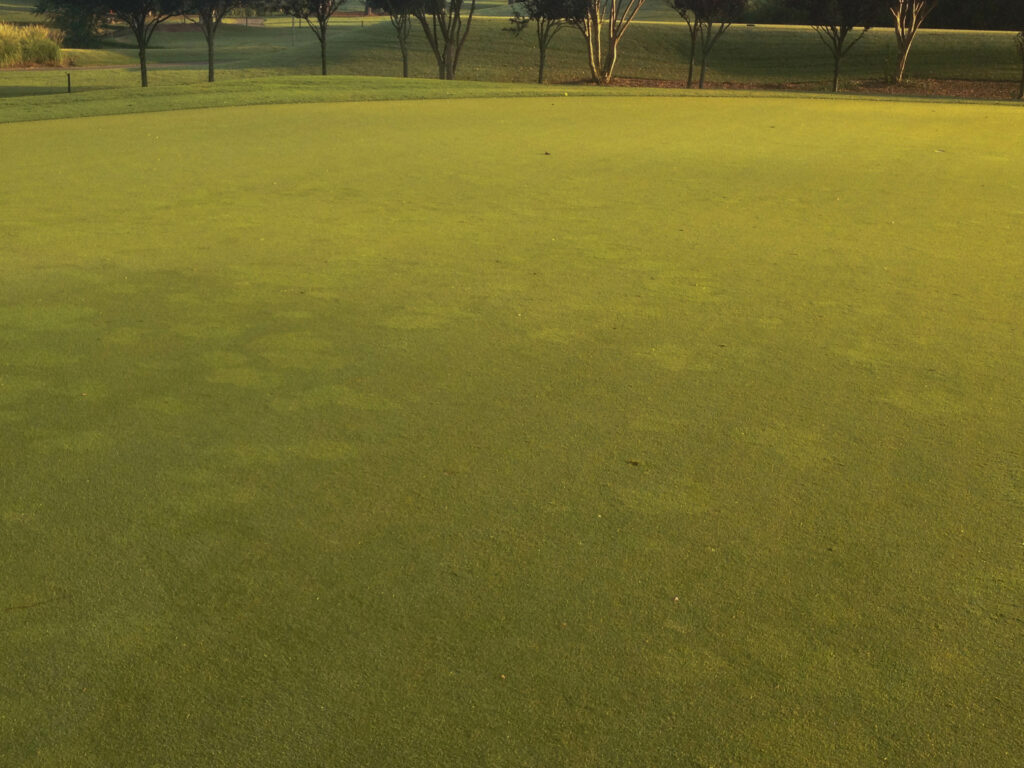
Off-types in a bermudagrass putting green. This symptom could easily be mistaken for a disease like take-all root rot. – Photo Credit – Dr. Jim Brosnan at the University of Tennessee
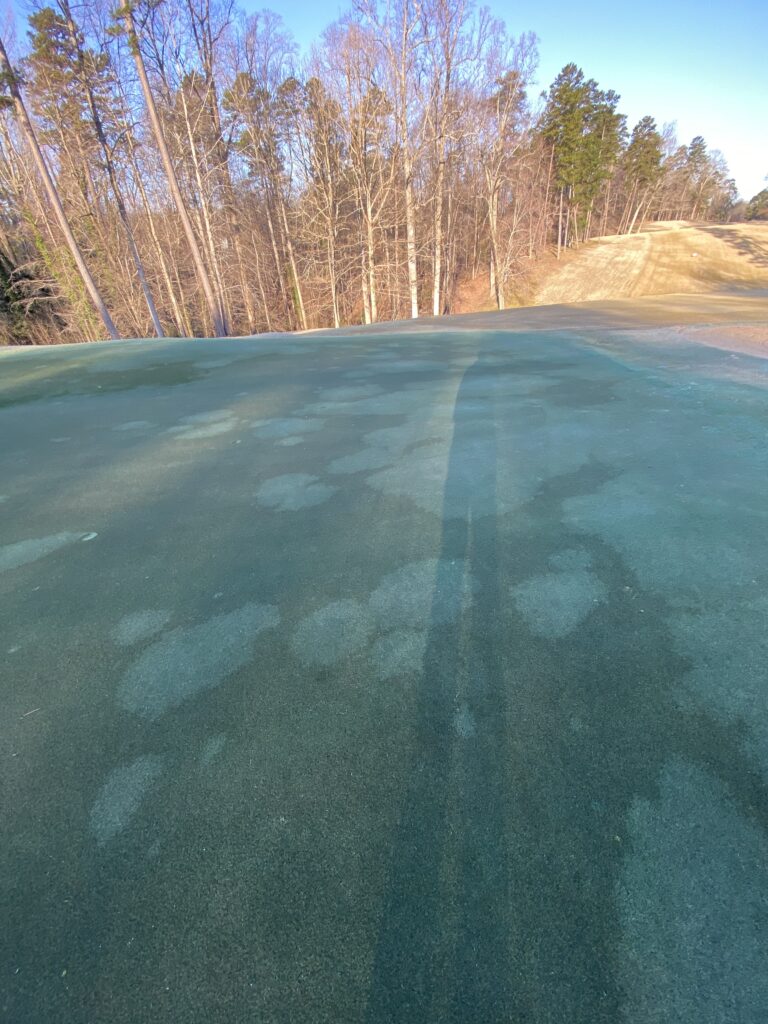
Off-types in a bermudagrass putting green. This symptom could easily be mistaken for a disease like take-all root rot.
Closing Thoughts
As you can clearly see, there are MULTIPLE things that can cause UDB putting greens to express a patch-like symptom. It is extremely important that you obtain an accurate diagnosis in order to be successful in managing each of these issues.
Finally, one issue not discussed in this post was Pythium root rot. Normally, this disease is most prevalent during late summer/early fall, however under warm/wet winters symptoms may develop.



